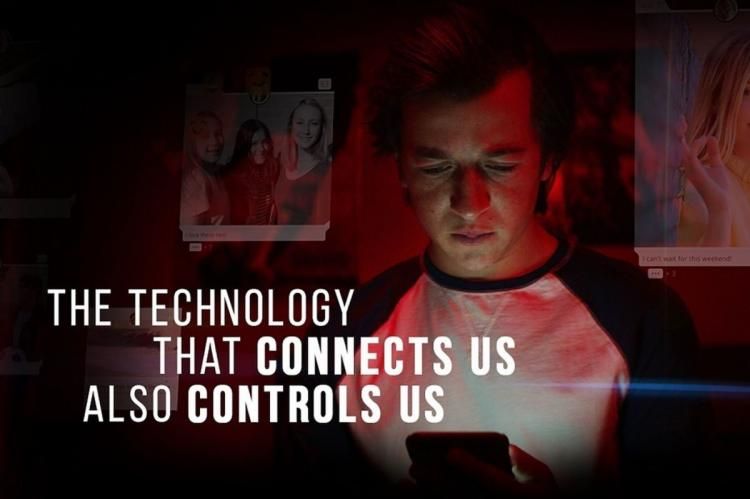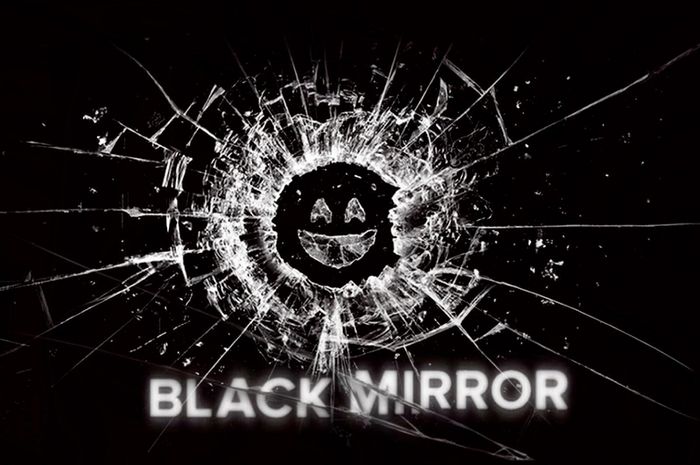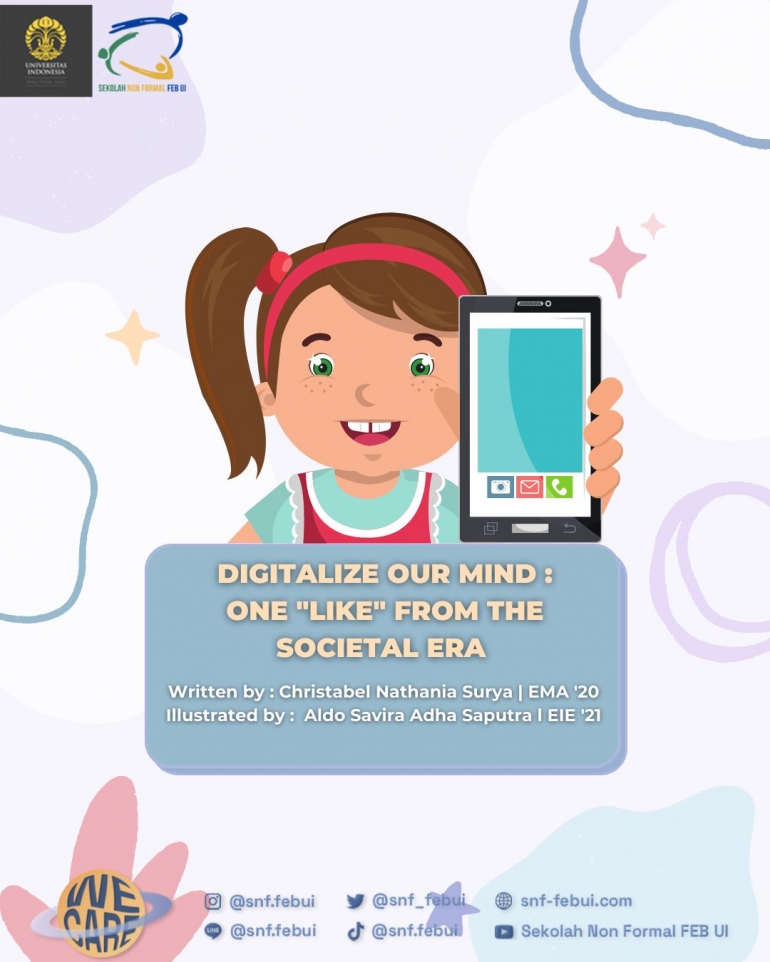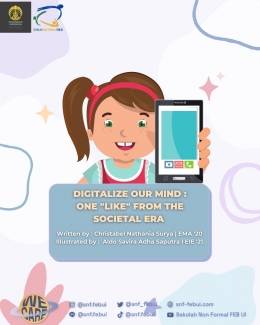Source : Sekolah Non Formal FEB UI
If you look at the role that screen media is playing in our society -- contributing perhaps to fearfulness and isolation -- there are ways to say perhaps it's a bigger crisis than opioids.
The world is changing rapidly. The term "technology" now includes all the things that we used in our daily life. Moreover, the existence of social media itself is something that we can not avoid. As parents, they might use this platform to fully assist their work, organization, or any professional business. As an adult and teenagers, they learn that it's useful to make friends, create a network, or do any simple things. However, for kids, do they truly know the essentials of this kind of technology? or maybe the thought of it is implanted in their minds by society? According to the United Nations Children's Fund report, State of the World's Children 2017: Children in a Digital World, show that one in three Internet users is a child and more than 175,000 children go online for the first time every day [2]. Children from all strata of life and backgrounds in East Asia have access to mobile devices and there is little difference in usage between girls and boys. As internet penetration and access to mobile devices grow, access to social media is no longer confined to children in high-income families. Social media is now a significant part of children's lives in East Asia across economic groups.
How Children Use Social Media?
Children's phones are most often provided by parents and are frequently passed down from parents, caregivers, or older siblings. Whether at school, on the streets or in shelters, or living with disabilities, technology is a central pillar of their everyday lives. Amongst those children using social media, there was little difference in usage between girls and boys, reflecting a narrowing of gendered differentials in use. This may be a result of the rapidly changing landscape and incremental gains in access, speed, and provision of services, but it is important in that it marks a departure from previous studies that highlight the very gendered differentials in activities and use. An important caution must be noted that the study design focused on social media users and did not allow for identification or analysis of gendered access to devices or apps. In the rare cases where children do not have their own devices, they have developed multiple strategies for accessing devices and content, such as sharing their parents' phones for access to WhatsApp. To protect their privacy, some report deleting their messages before they return the device to their parents. Many know the passwords to their parents' and siblings' phones and report setting up biometric profiles (their thumbprint or face) on their parents' phones. While it may be expected that apps developed in the region were most common, children almost universally reported Instagram, WhatsApp, Facebook Messenger, and Google as their most-used apps. Line and Telegram, also messaging applications, were also used, as was WattPad, Tik Tok, and others, although less commonly.
The Truth Behind Our Digital Era
During the emergency in 2020, there has been an interesting documentary called The Social Dilemma. The documentary highlights how social media can have an insidious influence on so many different aspects of human life, from things like our purchasing behaviors to our ideas about beauty standards, body image, and even our neurological pleasure pathways and global politics. There is also another social commentary about a technology called The Black Mirror that focused on media use that said the human condition cannot exist when embracing technology. Both of the films share themes of fear and the unknown. These also explain how humans have become a pawn in the game between social media and advertisers. Their dire warnings culminate in the lesson that social media companies are in a tussle for the attention of users and are ultimately in the business of facilitating behavioral change to favor advertisers.


Watching The Social Dilemma, it's easy to think that social media and Big Tech have caused our social strife and must be urgently regulated by government officials, who can allegedly make them gentler and kinder. Historically, new technologies have caused similar fears about our demise because they might overtake society and cause widespread concern and disruption [1]. The reality that is happening in our world seems almost incidental to the film, with the real-life horrors presented by the panel of interviewees emerging as much more pressing and engaging. The documentary and drama elements combine to communicate the sheer scale of the problem posed by social media, one that has the potential to topple governments, disrupt the very fabric of society, and undermine democracies through manipulation and misinformation. The film sets the alarm bells ringing on how governments can weaponize social media and how, in the wrong hands, it can be a potent tool for violence. For young people, social media is a major vehicle for cultural exchange, and giving it up completely might incite fear of isolation or ostracization. The fact is, even the experts interviewed in the film admit that as time goes on, technology will only become more and more integrated into our lives. This doesn't mean that there aren't major issues related to how we currently engage with technology, but it does mean that one way or another, we will need to learn how to coexist with technology while still being able to keep ourselves and our children safe.
The "Red Flag" of Social Media among Children
A new UNICEF report based on focus group discussions with children and young people in four East Asian countries explores how they make use of social media and how they negotiate their safety online. The report Our Lives Online: Use of Social Media by Children and Adolescents in East Asia -- opportunities, risks, and harms," published by UNICEF and The Center for Justice and Crime Prevention, gathers the views and experiences of children aged 11 to 18 years in Indonesia, Cambodia, Malaysia, and Thailand [2]. It also captures the perspectives of children not usually covered in these types of studies, such as lower-income families, marginalized children, children with disabilities, children living on the streets, and refugee children. The findings highlight some of the risks that children and young people face online. In focus groups, both boys and girls reported being sent and being asked for explicit pictures. Two out of five children in the focus groups reported having bad experiences that they would not want to tell anyone about, and more than half said they had met someone in real life they had first met online, most in the hope of forming a romantic relationship.









